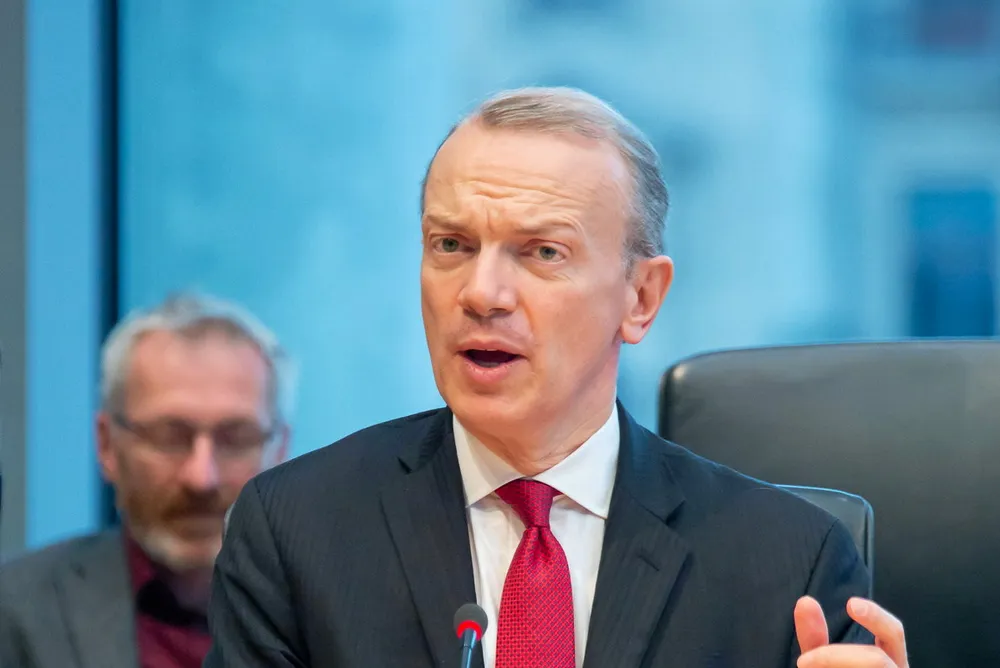Old foes grids and permitting stymie EU wind power in 2024: WindEurope
WindEurope says perennial issues keep growth well below EU targets but surge in tendering offers hope

Europe obtained 20% of all its electricity from wind power last year but is stuck in the growth slow lane by familiar challenges such as permitting and grid access, warned industry group WindEurope.
The Brussels-based body will release its full annual statistics and outlook at the end of February, but a preliminary report issued today (Friday) revealed that the EU obtained 19% of its electricity from wind in 2024, and the percentage was 20% once non-EU nations such as Norway and the UK were included in the European reckoning.
The EU has set a target for wind to provide 34% of the bloc’s electricity by 2030, and more than 50% by 2050, but WindEurope’s message was stark in terms of the push towards this.
“Europe is not building enough new wind farms,” the industry body said.
According to WindEurope's preliminary figures, Europe built just over 15GW of new wind in 2024, of which 13GW was onshore and 2.3GW offshore.
The EU accounted for around 13GW of the total. "To reach its 2030 energy and climate targets the EU should be building 30GW a year of new wind farms," WindEurope stated.
Delays with permitting and slow access to grids are stymying Europe's ambitions for wind, even though a rising number of wind farms are coming through government-led wind tenders.
According to WindEurope, few EU member states are implementing new EU permitting rules, while new grid connections are also being delayed.
The slow pace of electrification was identified as a third factor that is holding back new projects.
“The EU must urgently tackle all three problems. More wind means cheaper power which means increased competitiveness,” said WindEurope CEO Giles Dickson.
Perennial problem
According to the preliminary report, ”slow and cumbersome permitting” remains a key hurdle to the expansion of wind energy.
“The permitting situation has actually worsened in 2024,” it stated.
WindEurope argued that the “few countries” to have applied EU permitting rules have shown the measures to be effective. The EU permitting rules require introduction of binding deadlines and application of a principle of overriding public interest.
Germany was held up as a bright spot where a record 15GW of new offshore wind was successfully permitted in a single year.
“Governments must follow Germany’s example if they are serious about energy security and industrial competitiveness,” WindEurope urged.
'Number one' bottleneck
WindEurope said access to the electricity grid is now the number one bottleneck to deploying wind energy.
Red tape is part of the problem, WindEurope suggested, with an estimated 500GW of potential wind capacity waiting for an assessment of grid connection applications.
“Immediate action is needed to unblock grid capacity.
“But it’s not only the grid connection queues. Europe is generally not expanding its electricity grids fast enough.”
Some wind farms, such as the 900MW Borkum Riffgrund 3 offshore wind farm in Germany are fully installed but with little prospect of a grid connection before 2026, WindEurope noted.
Stalling rates of electrification in mobility, heating and industry mean only about 23% of all energy consumed in the EU is electricity. “This needs to increase to 61% by 2050… Europe is not electrifying its economy fast enough,” WindEurope noted.
In her mission statements for the newly appointed European Commission last year President Ursula von der Leyen tasked Commissioner for Energy and Housing Dan Jørgensen with drafting an Electrification Action Plan.
“This cannot happen fast enough,” WindEurope stated.
Offshore investments dip
More positively, the industry body noted that Europe awarded a record 37GW of new wind capacity in government auctions last year.
“In theory this is good news for the future pipeline and build-out. But urgent action is needed on permitting, grids and electrification in order to deliver a substantial increase in annual build-out rates." WindEurope stated.
The annual report will show that investments of €31bn ($32bn) were announced in 2024, for an estimated 19GW of new wind energy, but this was down on the 21GW financed in 2023.
Onshore wind's investment levels stayed firm at €24bn, but WindEurope said offshore wind investments were significantly down on 2023.
“It remains very challenging to take final investment decisions for offshore wind farms,” the body stated.
On the other hand, wind accounted for 50% of all electricity contracted under new Power Purchase Agreements (PPAs) in Europe in 2024. Corporate electricity consumers showed “huge appetite” for this source of energy, according to the wind industry body.
“Corporates understand the business case for sourcing wind power. Dedicated wind PPAs were 4GW out of a total of 12 GW of renewable PPAs," WindEurope stated, noting that "1GW of wind gives you twice as much electricity than 1GW of solar”.
(Copyright)